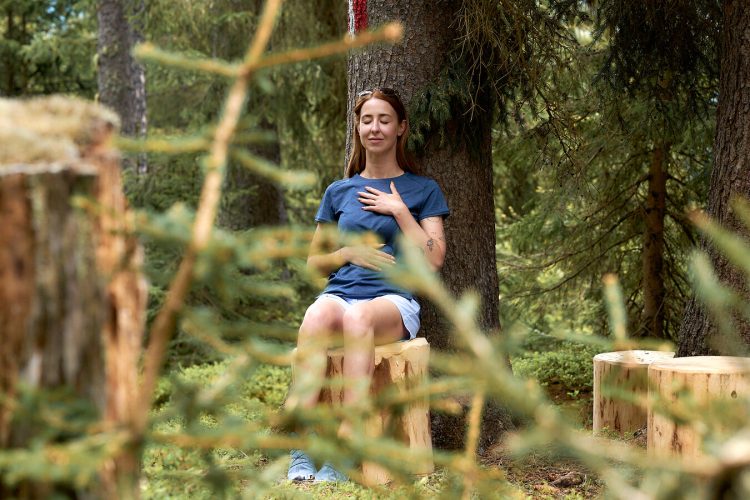Introduction: The Restorative Power of Nature
In our increasingly urbanized and digitally connected world, many people find themselves disconnected from the natural environment. Yet, across cultures and centuries, nature has been recognized as a profound healer for both body and mind. Today, scientific research substantiates what traditional wisdom has long known: immersion in nature promotes physical health, reduces stress, and nurtures mental well-being. Practices such as forest bathing, ecotherapy, and barefoot grounding provide accessible pathways to reconnect with the earth and rejuvenate the nervous system. This article explores how these nature-based approaches support holistic healing and reviews compelling studies demonstrating their impact on stress hormones like cortisol.
Forest Bathing: A Sensory Journey for Stress Relief
Originating in Japan as shinrin-yoku, forest bathing is the practice of mindfully immersing oneself in a forest environment. Unlike hiking or exercise-focused outdoor activities, forest bathing emphasizes slow, intentional engagement with nature through all five senses. This can include noticing the texture of tree bark, inhaling the scent of pine needles, listening to birdsong, and feeling the dappled sunlight on the skin.
Scientific investigations into forest bathing reveal measurable physiological benefits. Studies show that spending time in forested areas lowers salivary cortisol—a key marker of stress—while reducing blood pressure and heart rate. A landmark study published in the International Journal of Environmental Research and Public Health found that participants who engaged in forest bathing for several hours exhibited enhanced parasympathetic nervous system activity, which facilitates relaxation and recovery.
Beyond the biological effects, forest bathing promotes psychological restoration by reducing rumination, improving mood, and boosting feelings of connectedness. The natural setting encourages mindfulness, which in itself is linked to decreased anxiety and depression.
Ecotherapy: Nature as a Therapeutic Partner
Ecotherapy encompasses a range of therapeutic interventions that use nature to support mental health. Unlike forest bathing, which is primarily a personal practice, ecotherapy often involves guided activities led by therapists or facilitators. These can include nature walks with therapeutic dialogue, horticultural therapy, animal-assisted therapy, and community gardening.
The therapeutic mechanisms of ecotherapy stem from its capacity to provide sensory stimulation, social engagement, and meaningful purposeful activity. Nature’s complexity and beauty invite attention and curiosity, helping individuals break free from negative thought cycles. Moreover, working with plants or animals instills a sense of responsibility and achievement, fostering self-esteem.
Clinical trials in ecotherapy have demonstrated its effectiveness in reducing symptoms of depression, PTSD, and substance use disorders. For example, community gardening programs for urban populations have been shown to improve mood and decrease loneliness, which are crucial factors in mental wellness.
Barefoot Grounding: Reconnecting with Earth’s Electrical Energy
Barefoot grounding, also called earthing, is the practice of walking barefoot on natural surfaces such as grass, soil, or sand. Proponents argue that direct skin contact with the earth allows for the transfer of free electrons, which may neutralize oxidative stress and inflammation in the body.
While research on grounding remains emergent, preliminary studies suggest promising benefits. One study published in the Journal of Inflammation Research observed that grounding could reduce blood viscosity—a factor in cardiovascular health—and modulate cortisol rhythms. Subjective reports also include improved sleep, reduced pain, and enhanced feelings of calm after grounding sessions.
The tactile experience of barefoot contact with nature also stimulates proprioception and sensory nerve endings, which can foster bodily awareness and relaxation. For many, grounding serves as a simple, accessible way to anchor the nervous system and decrease stress.

Scientific Evidence Linking Nature to Lower Cortisol Levels
Cortisol, often dubbed the “stress hormone,” plays a central role in the body’s response to stress. Chronic elevation of cortisol can contribute to a range of health issues, including impaired immune function, hypertension, and mood disorders. Consequently, interventions that reduce cortisol are critical for both physical and mental health.
Numerous studies underscore the cortisol-lowering effects of nature exposure. A meta-analysis published in Environmental Research synthesized data from over 20 studies and concluded that spending time in natural settings consistently reduces cortisol levels compared to urban environments. The effect was amplified with longer duration and more immersive exposure.
One particularly illuminating study involved participants taking a 20-minute walk either in a forest or an urban street. Those in the forest exhibited significantly decreased salivary cortisol post-walk, along with improvements in mood and cognitive function. Another longitudinal study demonstrated that repeated nature exposure led to sustained reductions in daily cortisol levels among stressed individuals.
These findings support the hypothesis that natural environments engage our parasympathetic nervous system and downregulate the hypothalamic-pituitary-adrenal (HPA) axis, thereby restoring homeostasis.
Holistic Benefits of Nature Immersion Beyond Cortisol Reduction
While cortisol reduction is a key benefit, nature immersion positively influences numerous other physiological and psychological parameters. It enhances immune function by increasing natural killer cell activity and anti-inflammatory cytokines. Cardiovascular health improves through lowered blood pressure and heart rate variability enhancements. Mental health benefits include reductions in anxiety, depression, and fatigue, as well as enhanced creativity and cognitive flexibility.
Socially, engaging with nature often occurs in communal settings that foster social cohesion and support networks, which are protective factors for mental health.
Practical Ways to Incorporate Nature Immersion into Daily Life
Integrating nature immersion need not require a remote wilderness retreat. Here are practical approaches:
- Daily Forest Bathing: Spend 15–30 minutes walking slowly in a nearby park or wooded area, focusing fully on sensory experiences.
- Ecotherapy Activities: Join community gardens, volunteer for conservation projects, or participate in nature-based group therapies.
- Barefoot Grounding: Walk barefoot on grass, sand, or soil at home or in natural spaces for a few minutes daily.
- Indoor Nature Connection: Use plants, natural sounds, or nature imagery inside living and workspaces to foster calm.
- Technology Breaks Outdoors: Take mindful breaks away from screens to experience natural light, air, and sounds.
By consciously prioritizing these practices, individuals can harness nature’s healing potential to support long-term well-being.
Challenges and Considerations
Accessibility to natural environments can be limited for some due to urban density, mobility constraints, or safety concerns. Creative solutions like green rooftops, indoor plants, and virtual reality nature experiences may offer alternatives. It is also important to practice environmental stewardship to protect these healing spaces for future generations.
People with allergies or specific medical conditions should consult healthcare professionals before engaging in prolonged nature exposure. Mindful progression is key to avoid sensory overwhelm or injury.
Conclusion: Embracing Nature’s Healing Wisdom
Nature immersion, through forest bathing, ecotherapy, and barefoot grounding, offers powerful, scientifically supported methods to heal both body and mind. By lowering stress hormones like cortisol and restoring nervous system balance, these practices cultivate resilience, emotional regulation, and physical health. As modern life grows more disconnected from natural rhythms, intentionally returning to the earth becomes a vital act of self-care. Embracing nature as a therapeutic partner invites a holistic path to wellness, reminding us that healing is deeply rooted in our connection to the living world.











































